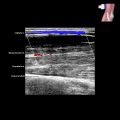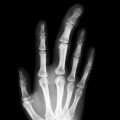Rotator Cuff/Biceps Tendinosis
KEY FACTS
Terminology
Imaging
IMAGING
General Features
Ultrasonographic Findings
 Graded as mild, moderate, or severe based on degree of thickening, hypoechogenicity, and loss of normal fibrillar pattern
Graded as mild, moderate, or severe based on degree of thickening, hypoechogenicity, and loss of normal fibrillar pattern
 Focal hypoechoic areas of proteoglycan deposition can mimic intrasubstance tears
Focal hypoechoic areas of proteoglycan deposition can mimic intrasubstance tears
 Nonintrasubstance tears are discernible through changes in tendon contour (contour retraction, loss of volume, fluid gap)
Nonintrasubstance tears are discernible through changes in tendon contour (contour retraction, loss of volume, fluid gap)
Imaging Recommendations
 Systematically examine tendons, taut and nontaut, in longitudinal and transverse planes with patient in sitting position
Systematically examine tendons, taut and nontaut, in longitudinal and transverse planes with patient in sitting position
 Arm rotated into different positions to optimize visibility of each tendon in turn
Arm rotated into different positions to optimize visibility of each tendon in turn
 Important to always grade severity of tendinosis as mild, moderate, or severe for each tendon individually
Important to always grade severity of tendinosis as mild, moderate, or severe for each tendon individually
DIFFERENTIAL DIAGNOSIS
Intrasubstance Tendon Tears
Rotator Cable
Rotator Cuff/Biceps Tendinosis









 indicative of tendinosis. A normal subscapularis tendon
indicative of tendinosis. A normal subscapularis tendon  and biceps tendon
and biceps tendon  are also shown.
are also shown.
 indicative of moderate to severe tendinosis. A barely discernible fibrillary pattern
indicative of moderate to severe tendinosis. A barely discernible fibrillary pattern  is present. Note the hypoechoic area
is present. Note the hypoechoic area  close to the insertion due to a combination of anisotropy and rotator cable effects.
close to the insertion due to a combination of anisotropy and rotator cable effects.
 . Multiple, poorly demarcated, hypoechoic areas
. Multiple, poorly demarcated, hypoechoic areas  with loss of distinct fibrillary structure are present. Features are indicative of severe supraspinatus tendinosis.
with loss of distinct fibrillary structure are present. Features are indicative of severe supraspinatus tendinosis.
 at proximal end of bicipital groove at “genu” between horizontal and vertical components. The more distal tendon is relatively normal
at proximal end of bicipital groove at “genu” between horizontal and vertical components. The more distal tendon is relatively normal  . Tendinosis usually occurs at this location.
. Tendinosis usually occurs at this location.






























